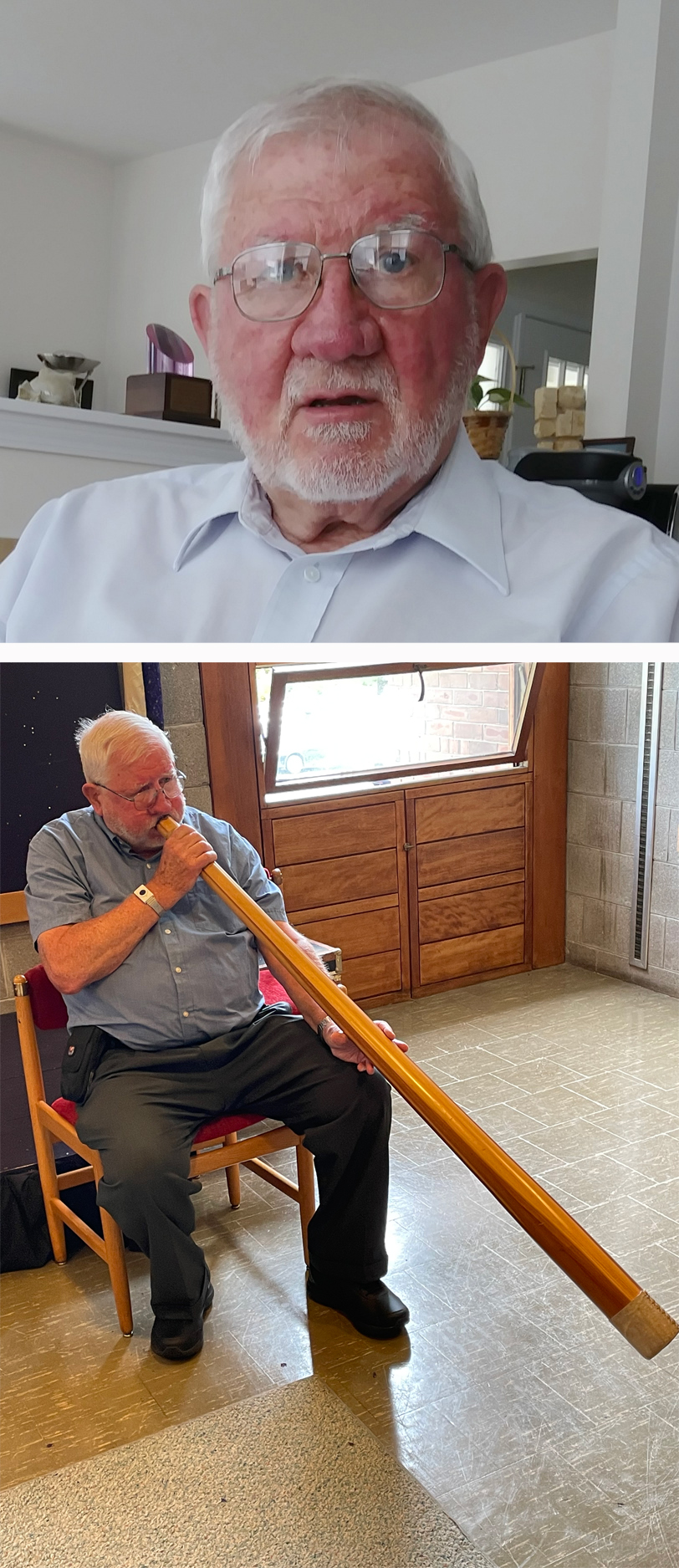
|
Ensemble codes:
AB=Antique Brass, BB= Big Band, BP= Brasso Profundo, CB=Concert Band, CC=Clarinet Choir, CH=Choir, FB=Full Band, FE=Flute Esemble,
FO=Symphony Orchestra, GB=Green Band, GS=Green Strings, SB=Symphonic Band, SE=Sax Ensemble, ST=String Orchestra, JE=Jazz Ensemble, GJ=Green Jazz Band
Larry Iwan |
||||
Tuba |
||||
Ensembles: GB |
||||
 |
I have always enjoyed listening to music--many different kinds of music. When I was in the 4th grade, my mother bought a piano and I asked whether I could take lessons. She hired an itinerant teacher who drove to our house every two weeks, and I worked on scales, exercises and pieces for four years. I discontinued formal lessons then, but continued to buy music I liked and play for my own pleasure. I left home for college and didn't play much piano there while I studied engineering physics and aeronautical engineering. I got my music fix by teaching myself guitar and enjoying folk singing which was a popular group pastime in the 50's. I graduated, married, had two daughters, and bought a house in Ithaca. In this house was an old well-worn upright piano left by previous owners who got it from a church. I collected all of my old piano music from my parents' house and returned to the keyboard. My enthusiasm grew, so I replaced that old creaky and buzzy upright with a rebuilt grand piano and signed up again for music lessons. We moved that piano to Rochester, I found another teacher, and continued to enjoy taking lessons as an adult for several years. Horns invaded my musical space in an unusual way. In 1998, I impulsively bought a CD of Aboriginal Australian music and became obsessed with the haunting sounds of the didgeridoo. I wanted to buy one and learn to play it. Nobody at Eastman or anywhere else in town knew of any shops in Rochester that sold this instrument, nor of anyone who offered lessons. Eventually, I located a Portland, Oregon shop that sold me one, and then a California artist who made and advertised them on the internet. I bought two, an instructional tape, several more CD's, and practiced obsessively until I could circular breathe and create a wide range of timbres and rhythms to imitate Aboriginal players. Eventually I found and attended a didgeridoo festival in California, and a year later, a cultural sharing festival in Arnhem Land, Northern Australia, where an Aboriginal master, Djalu Gurruwiwi, was offering Yidaki (didgeridoo) master classes. No two of these instruments play or sound the same, so I began to accumulate a collection of them. The didgeridoo has no valves or finger holes. It is a hollow log with a large mouthpiece at one end that offers only a few overtone "toots" to the player. One doesn't play melodies on a didgeridoo; it is an instrument of rhythm and tonality. And so, when someone offered me the opportunity to hold and blow a tuba at a didgeridoo jam, the world of horns expanded for me. Not only did the tuba offer a set of musical notes that cover a range somewhat over two octaves, but when I played it held tight to my chest, its vibrations were positively sensual! Hearing my new-found enthusiasm for the tuba, my wife and daughters conspired to locate and surprise me with a well-used one for my 65th birthday. I soon connected with a teacher who recommended after a year or so that I consider joining a band. So I found myself playing in an ensemble for the first time in my life at age 66, and I am still playing with them 16-1/2 years later. My professional career in Rochester comprised twenty-six years at the U of R Laser Energetics Lab building and operating powerful research lasers, and nine years at Eastman Kodak Research Labs where I acquired expertise in image digitizing and color reproduction in order to work on various projects. I enjoyed it all and miss the daily access I used to have to hi-tech tools and the talented associates with whom I worked. |
|||